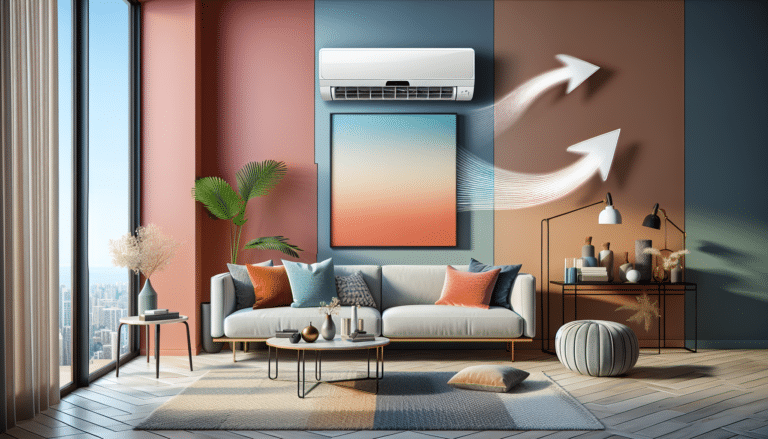Understanding Split Air Conditioning Services
Split air conditioning systems have become a popular choice for both residential and commercial spaces, offering a combination of functionality and aesthetic appeal. These systems are designed to provide efficient cooling while minimizing the need for extensive ductwork. Understanding the nuances of split air conditioning services can help homeowners and property managers make informed decisions for their heating and cooling needs.
What are Split Air Conditioners?
Split air conditioners consist of two main components: an outdoor unit that houses the compressor and a fan, and one or more indoor units that act as air handlers. This configuration allows for efficient temperature control without the need for traditional ductwork, making it an excellent choice for homes where space is at a premium.
Ductless Air Conditioning Benefits
One of the standout features of split systems is their ductless design. Ductless air conditioning options present several advantages, including:
1. **Energy Efficiency:** By eliminating ductwork, which can account for significant energy loss, ductless systems improve overall energy efficiency.
2. **Zoning Capabilities:** Split systems allow different rooms to be set at different temperatures, catering to individual preferences and reducing energy waste.
3. **Space-Saving Solutions:** The absence of ductwork opens up more space for architectures and design, making it ideal for homes with limited room for installation.
4. **Easy Installation:** Compared to traditional systems, installation is less invasive and can often be completed in a single day.
Air Conditioner Installation Essentials
Proper installation is critical for the performance of split air conditioners. Key aspects of the air conditioner installation process include:

– **Selecting the Right Air Conditioner Unit:** Choosing the appropriate size and model based on the specific square footage and cooling needs of the space is essential. An improperly sized unit can lead to inefficiencies and higher energy bills.
– **Mini-Split Air Conditioner Installation Guide:** Referencing guidelines and best practices specific to mini-split systems can help ensure a successful installation. This includes determining the placement of indoor and outdoor units for optimum airflow and system performance.
– **Air Conditioner Installation Costs Overview:** Understanding the expenses involved in installation, including labor and materials, aids in budgeting and financial planning. It’s valuable to obtain several quotes from different HVAC professionals.
Air Conditioning System Maintenance Tips
Routine maintenance is vital for ensuring the longevity and efficiency of split air conditioning systems. Here are some essential tips:
1. **Regular Filter Changes:** Dirty filters can restrict airflow and significantly reduce the system’s efficiency. It’s advisable to inspect and replace filters monthly, especially during peak usage months.
2. **Outdoor Unit Maintenance Tips:** Keeping the outdoor unit free of debris, dirt, and vegetation ensures proper airflow. Clearing leaves and cleaning the surface will enhance its performance.
3. **Professional Help for Repairs:** While some minor repairs can be handled by homeowners, professional help is essential for addressing significant issues. Recognizing when to call for air conditioner repairs is crucial to avoiding more severe damage.
Common Air Conditioning Problems Fixes
When using split air conditioners, it’s important to be aware of common problems that may arise and their fixes:
– **Inadequate Cooling:** This could stem from a refrigerant leak or dirt in the air filter. Identifying this promptly can help restore comfort.
– **Unusual Noises:** Strange sounds coming from the unit could indicate mechanical issues requiring immediate professional assessment.
– **Frequent Cycling:** If the air conditioner turns on and off frequently, it could be a sign of an undersized unit or thermostat issues.
Air Conditioning Energy Ratings Explained
Understanding air conditioning energy ratings is crucial when selecting units. The Seasonal Energy Efficiency Ratio (SEER) measures the cooling output during a typical season divided by the total electric energy input. Higher SEER ratings indicate better energy efficiency. Consumers should look for energy-efficient air conditioning models that will not only save money but contribute to a sustainable environment.
Improve Air Conditioner Efficiency
There are multiple strategies to improve air conditioner efficiency:
– **Utilizing Programmable Thermostats:** These devices can optimize cooling schedules based on occupancy, ensuring energy is not wasted.
– **Sealing Ducts and Insulation:** Though ductless systems don’t rely heavily on ductwork, sealing any ducts can enhance overall system efficiency.
– **Regular Professional Inspections:** Scheduling annual inspections with a qualified technician ensures all components are functioning correctly.
Commercial Air Conditioning Services Maintenance
For commercial spaces, maintaining air conditioning systems is paramount for comfort and operational efficiency. Best practices include:
1. **Regular Maintenance Checks:** Regular check-ups reduce the risk of unexpected breakdowns and keep the cooling systems running at peak efficiency.
2. **Energy Efficiency Longevity:** Implementing energy-saving measures and routine maintenance schedules will significantly increase the longevity of commercial HVAC systems.
3. **Customer Reviews and Ratings:** Scrutinizing air conditioner customer reviews and ratings can provide insight into the reliability and performance of specific units.
Choosing from Indoor Units Air Handler Options
When selecting indoor units for a split air conditioning system, several factors come into play, such as size, design, and capacity. Options may range from wall-mounted units to ceiling cassettes, each offering unique advantages suitable for various spaces. It is essential to match the unit type with the overall layout and aesthetics of the home or business.
Ductwork Alternatives: Ductless Systems
For those considering installation, ductless air conditioning systems offer practical alternatives to traditional ductwork. The ability to customize installations enhances flexibility and efficiency, making them suitable for retrofitting older homes and buildings.
Conclusion
In conclusion, split air conditioning services offer significant advantages for both residential and commercial applications. Understanding their features, maintenance requirements, and installation essentials is essential for ensuring optimal performance and efficiency. As energy-efficient models continue to evolve, consumers are empowered to make informed choices that contribute to both comfort and sustainability.
